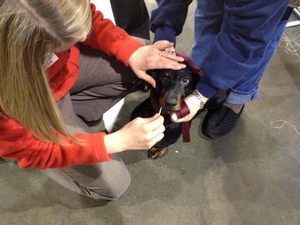In the world of human genetics, stories related to hereditary cancer predisposition syndromes have recently made quite a splash in the media. For example, actress Angelina Jolie made a very public decision to have a double mastectomy in order to reduce her breast cancer risk. There are other popular stories as well. Although hereditary cancer predisposition syndromes are not as common in the canine population as they are in the human population, knowing a little information about these genetic conditions and how they work may impact breeding practices.
What exactly is a hereditary cancer predisposition syndrome? Those are a lot of complicated words. Let’s dissect that phrase:
Hereditary – inherited, genetic, passed from parent to offspring.
Cancer – uncontrolled invasive abnormal cell growth.
Predisposition – tendency towards or gravitation to.
Syndrome – a group of symptoms with a single cause.
A hereditary cancer predisposition syndrome gives the affected individual a tendency to develop cancer. Cancer, for the most part, is multifactorial. That means there are genetic and environmental influences. However, hereditary cancer predisposition syndromes have a much greater genetic influence than environmental influence ...






